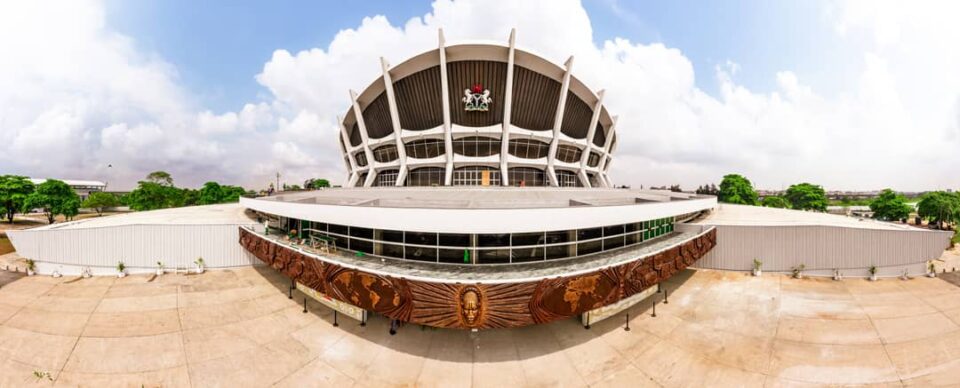By Prisca Sam-Duru
The National Theatre, now known as the Wole Soyinka Centre for Culture and Creative Arts, reopened on October 1, 2025, after a renovation that began in July 2021.
The Bankers’ Committee, which handled the edifice’s restoration, announced the completion of the restoration in August 2024.
President Bola Ahmed Tinubu officially inaugurated the renovated complex on October 1, 2025, to coincide with Nigeria’s 65th Independence Day.
Here are five key takeaways from October 1, 2025, reopening of the National Theatre.
New name
The complex is now renamed the Wole Soyinka Centre for Culture and Creative Arts to honour Africa’s first Nobel laureate in literature, Wole Soyinka.
Soyinka himself accepted the honour while acknowledging his previous stance against naming public monuments after individuals. The complex now focuses on national pride, the revival of the creative economy, and a new public-private management model.
Symbol of national rebirth
To the federal government, the theatre’s revival is a signal of Nigeria’s potential for greatness and its ability to overcome past setbacks.
Partnership for progress
The extensive renovation happened courtesy of a joint effort between the federal government and the private sector, particularly the Central Bank of Nigeria (CBN) and the Bankers’ Committee, which reportedly invested ₦68 billion in the project. It will be managed by Theatre Partners Limited, a new public-private partnership.
Investment in the creative economy
At a period when there’s emphasis on leveraging the potentials of the country’s creative industry to boost economy, the reopening highlights the potential of Nigeria’s creative industries to generate jobs, revenue, and economic growth. CBN Governor, Olayemi Cardoso, was said to have noted the sector’s potential to generate $25 billion annually.
Modernization and expansion
The renovated edifice now meets world-class standards with new features, including an upgraded 5,000-seater main amphitheater and a 3,000-seater banquet hall, advanced audio-visual technology and stage engineering, refurbished cinema halls and exhibition galleries, improved infrastructure, including new electrical, water, and sewage systems. The new facility is also more energy-efficient, with the installation of solar power. The theatre is now seamlessly integrated with the Lagos Blue Line rail system, making it more accessible to the public.
Looking ahead, with the refurbished theatre, officials and stakeholders have expressed hope for increased creative activities, leading up to the 50th anniversary of FESTAC ’77 in 2027.


